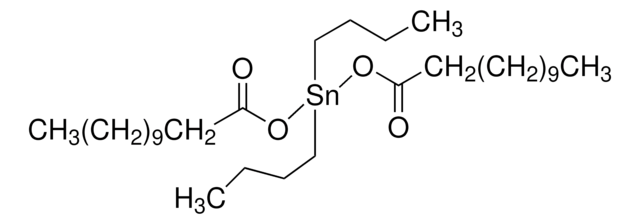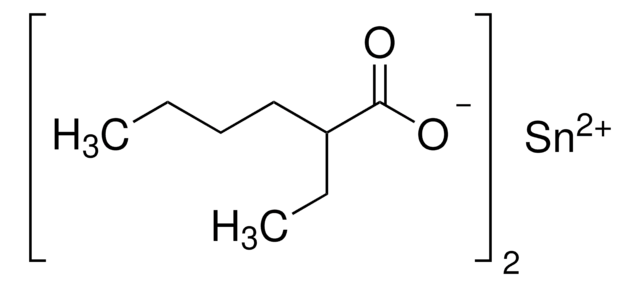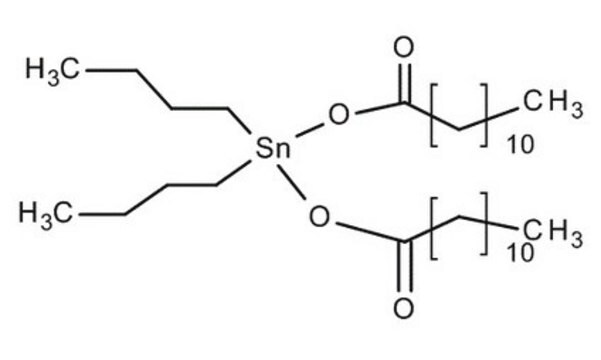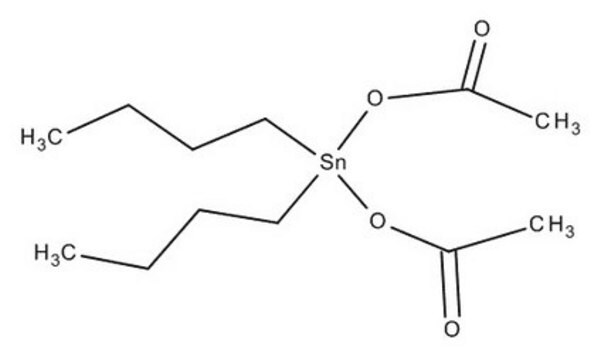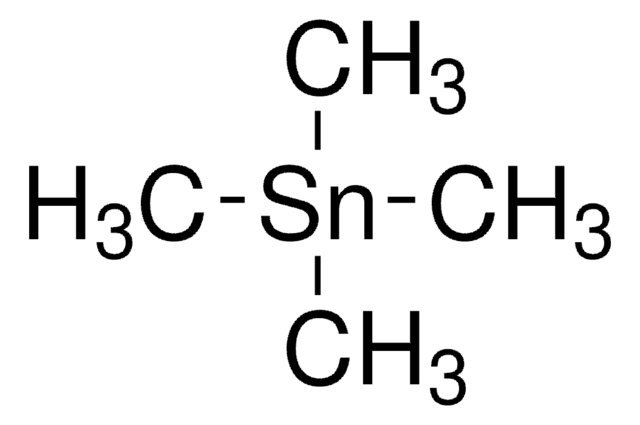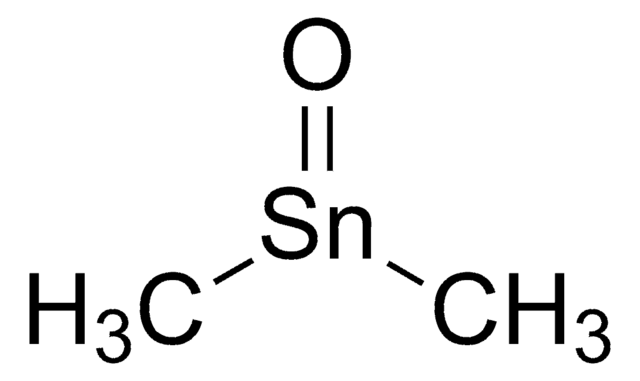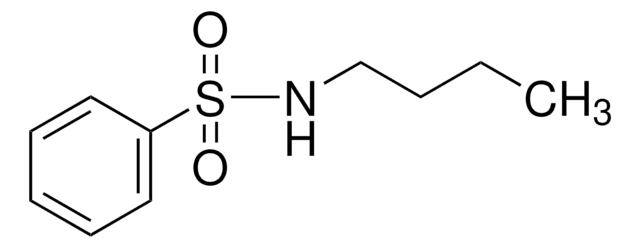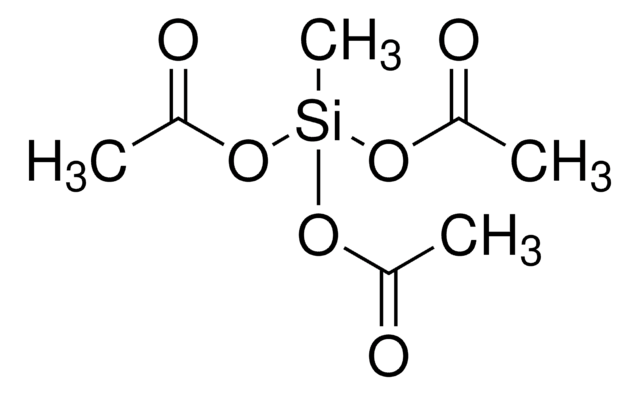290890
Dibutyltin diacetate
technical grade
Synonyme(s) :
Diacetoxydibutyltin
About This Item
Produits recommandés
Qualité
technical grade
Niveau de qualité
Densité de vapeur
12 (vs air)
Pression de vapeur
1.3 mmHg ( 25 °C)
Indice de réfraction
n20/D 1.471 (lit.)
pb
142-145 °C/10 mmHg (lit.)
Pf
7-10 °C (lit.)
Densité
1.32 g/mL at 25 °C (lit.)
Chaîne SMILES
CCCC[Sn](CCCC)(OC(C)=O)OC(C)=O
InChI
1S/2C4H9.2C2H4O2.Sn/c2*1-3-4-2;2*1-2(3)4;/h2*1,3-4H2,2H3;2*1H3,(H,3,4);/q;;;;+2/p-2
Clé InChI
JJLKTTCRRLHVGL-UHFFFAOYSA-L
Vous recherchez des produits similaires ? Visite Guide de comparaison des produits
Catégories apparentées
Description générale
Application
- Wittenberger tetrazole derivatives by reacting with various nitriles in the presence of trimethylsilyl azide.
- Carbamate derivatives from various isocyanates and alcohols in the presence of dichloromethane as solvent.
- Urea derivatives from aryl isocyanates and various amines in the presence of 4-methylmorpholine.
Mention d'avertissement
Danger
Mentions de danger
Classification des risques
Aquatic Acute 1 - Aquatic Chronic 1 - Eye Dam. 1 - Muta. 2 - Repr. 1B - Skin Corr. 1B - Skin Sens. 1 - STOT RE 1 - STOT SE 1 Oral
Organes cibles
thymus gland, thymus gland,Immune system
Code de la classe de stockage
6.1A - Combustible acute toxic Cat. 1 and 2 / very toxic hazardous materials
Classe de danger pour l'eau (WGK)
WGK 3
Point d'éclair (°F)
302.9 °F - Pensky-Martens closed cup
Point d'éclair (°C)
150.5 °C - Pensky-Martens closed cup
Équipement de protection individuelle
Faceshields, Gloves, Goggles, type ABEK (EN14387) respirator filter
Faites votre choix parmi les versions les plus récentes :
Déjà en possession de ce produit ?
Retrouvez la documentation relative aux produits que vous avez récemment achetés dans la Bibliothèque de documents.
Les clients ont également consulté
Global Trade Item Number
| Référence | GTIN |
|---|---|
| 290890-50ML | 4061826304006 |
| 290890-250ML | 4061838126337 |
Notre équipe de scientifiques dispose d'une expérience dans tous les secteurs de la recherche, notamment en sciences de la vie, science des matériaux, synthèse chimique, chromatographie, analyse et dans de nombreux autres domaines..
Contacter notre Service technique